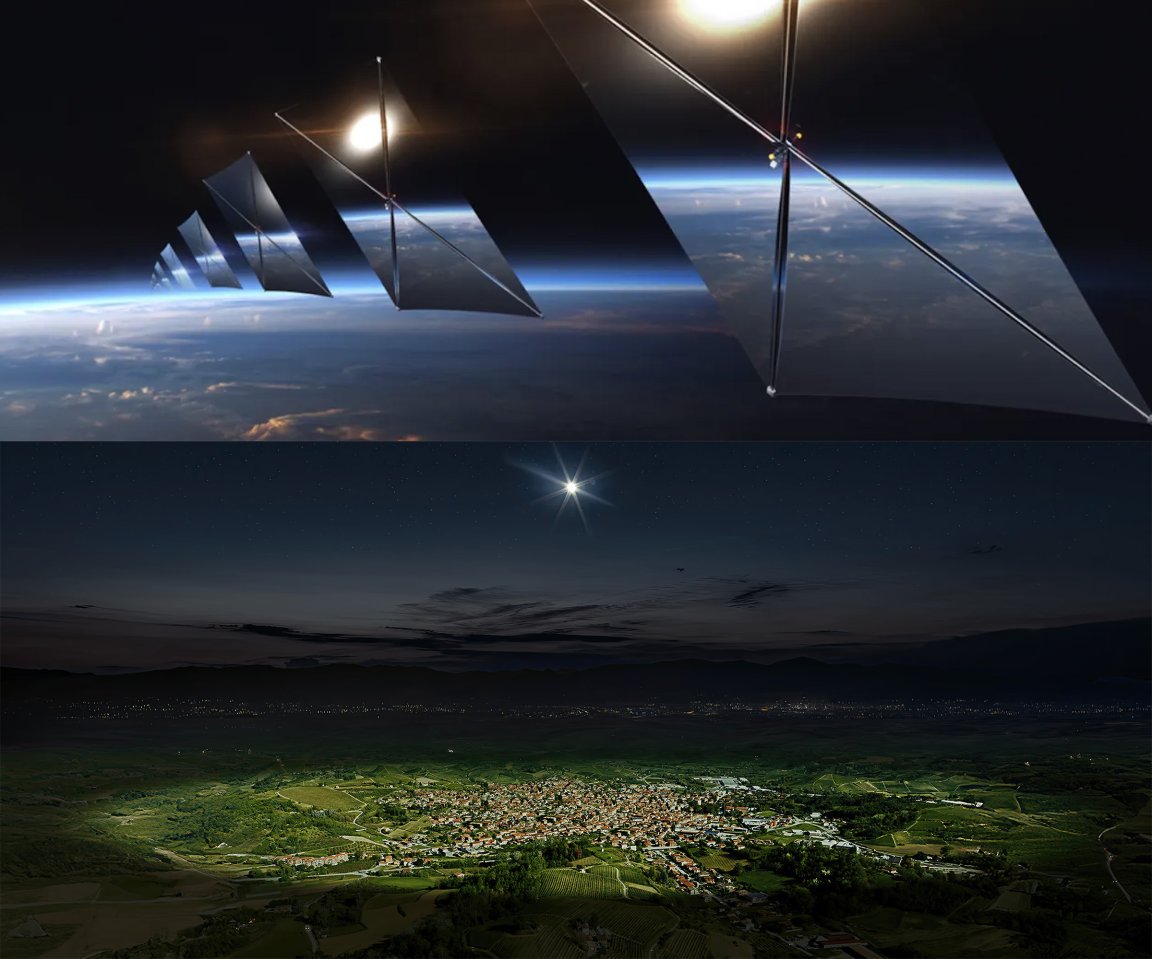
These days, orbital real estate is growing increasingly cluttered with all manner of communication, observation, research, and navigation satellites. It’s a market worth $286 billion in 2022, projected to grow precipitously in the coming years as mass production takes off.
One bold new startup is looking to cash in on the frenzy with a particularly bizarre approach: a massive array of space mirrors meant to reflect the Sun’s light down to paying subscribers.
Called Reflect Orbital, the venture started taking reservations for “spots of light” back in August, showcasing its service with numerous mockup videos. In one clip, Reflect cofounder and former SpaceX intern Ben Nowack is shown messing around with the company’s app on his phone. He scrolls across an overhead map of terrain, bringing a simulated spot of light over to the location he’s supposedly standing.
Suddenly, the immediate area is flooded with bright light from a shining beam in the night sky — likely an outdoor production light — a bizarre novelty that surely won’t get old after the first five minutes.
The company has yet to launch any of the 4,000 satellite mirrors it sold in its far-out pitch. However, the startup recently applied for a license with the Federal Communications Commission (FCC) to launch a 60-by-60 foot demo craft in April of 2026, Space.com reported this week. That’s after winning a $1.25 million contract from the US Air Force, of all places, on top of a $20 million Series A funding round to build out its “sunlight on demand” service, which Reflect says will “strengthen the national defense of the United States of America.”
While the pricing scheme is unknown, the company is targeting an extensive group of deep-pocketed customers, billing its service as a solution for national defense, civil infrastructure, industrial agriculture, and “leading brands” who want to bring a “novel touch to their promotions.” So far, the company says it’s fielded over 260,000 applications from 157 countries to reserve satellite-reflected sunlight.
Astronomers, however, aren’t so gung-ho about the idea of a massive space mirror blinding the Earth with Sunlight.
“The reflectors will be directing their light [even after they pass their target] because obviously they can’t shut that off,” John Berentine, an astronomer at the Silverado Hills Observatory told Space.com. “The beam reflected by these satellites is very intense, four times brighter than the full moon, and they will be flying multiple satellites in a formation. That will have an effect on wildlife in the directly illuminated area, but also, through atmospheric scattering, on the surrounding areas as well.”
“The central goal of this project is to light up the sky and extend daylight and obviously, from an astronomical perspective, that’s pretty catastrophic,” Robert Massey, deputy executive director at the Royal Astronomical Society of the UK told the publication.
Massey added that it’s not just a few crotchety scolds worried about Reflect’s effect on the planet, but that the whole astronomical community was “seriously concerned about the development.”
A Reflect spokesperson told Space.com not to worry, because each reflection is “highly localized” to a “5-kilometer [3.1 mile] area for a finite period of time.”
“During the 2026 demonstration, observers at designated test sites will see the reflection as a bright moving star,” they wrote. “The illuminated area on the ground will be a soft, moonlike glow.”
The startup adds that its orbital mirror array will be established in Sun-synchronous orbit, essentially circling the planet longitudinally from pole to pole. Since any spacecraft launched by this American startup will inevitably orbit the entire globe, it raises a thorny question: who should have the right to deploy a giant space mirror over the rest of the planet?
More on satellites: SpaceX’s Classified Military Satellites Emitting “Mysterious Signal”